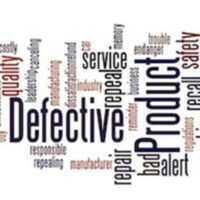Understanding Design And Manufacturing Defects

When we buy a product, we don’t expect that it will be defective and we don’t anticipate that it could be so defective that it could cause injury. But no process is 100%; even the most perfect company making the most perfect product will have some defects.
In the world of products liability, not every product defect is the same. Product defects generally fall into two main categories: manufacturing and design defects.
Manufacturing Defects
A manufacturing defect can be thought of as a “one time mistake” (although in reality the error could occur multiple times). The product is manufactured incorrectly, or not made according to the product’s specifications. The error is not planned, and the defective product may look or behave differently than the others of the exact same product.
A victim can look to how a product is supposed to be made and demonstrate that the defective product was not made according to those specifications.
Airbags are a good example; a normally functioning airbag is safe and prevents injury. Airbags themselves are not dangerous in the way that they are used every day. But if a company has defective airbags, the airbags are not being made or installed to specifications and can cause injury when they deploy prematurely or fail to deploy.
Food is another example where manufacturing defects can come into play. Meat, dairy, or other food products are not inherently dangerous. But when a batch of meat has salmonella, that meat product is now defective.
Design Defects
Design effects are much different. With a design defect, the product is dangerous, even if it is manufactured 100% correctly and according to how it’s supposed to be manufactured. Every single one of the defectively designed products that is made is equally dangerous. The problem that makes the product dangerous is intended—the company doesn’t intend to injure someone, but the product is made the way it is intentionally.
Defective drugs are a big area where manufacturing effects come into play. When a drug has an unintended side effect, the drug is being manufactured just fine, and every dose of that drug is made the same way—it’s the inherent makeup of the drug that is causing an injury.
Design defects can be difficult cases, because to win, a victim must argue that the product as designed by the manufacturer is faulty. Many products—such as airbags—can be quite dangerous, even when used or made properly. Items like chainsaws, knives, or power tools all carry some degree of danger. That doesn’t make their design defective.
Warnings
In some cases, defectively designed products which are still needed and useful can avoid liability to placing appropriate warnings. Many consumers ignore these warnings, but they are there to help consumers understand how to use a product safely. In many products liability cases, the defense’s first question to someone injured by a product, is whether or not they read the warnings on the product’s label.
Call the Clinton personal injury attorneys at Fox, Farley, Willis & Burnette, for help today if you are injured by a defective product.
